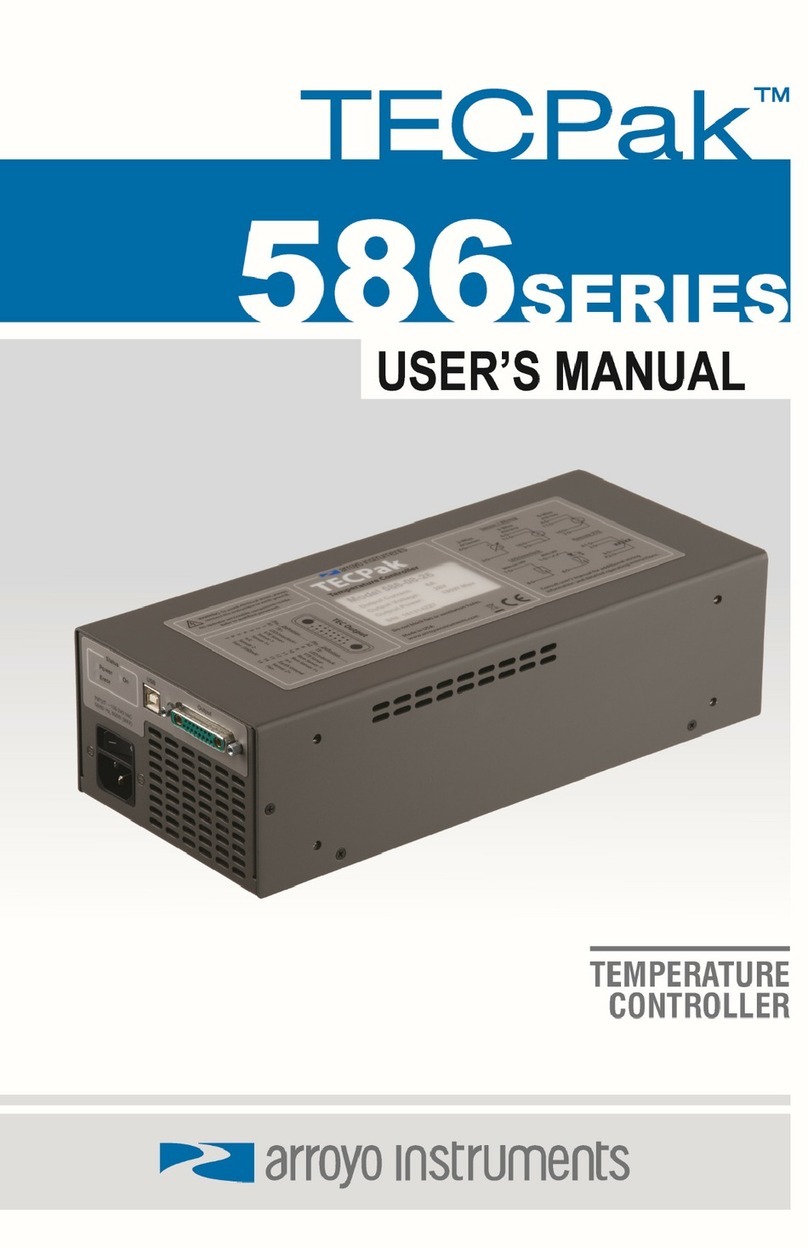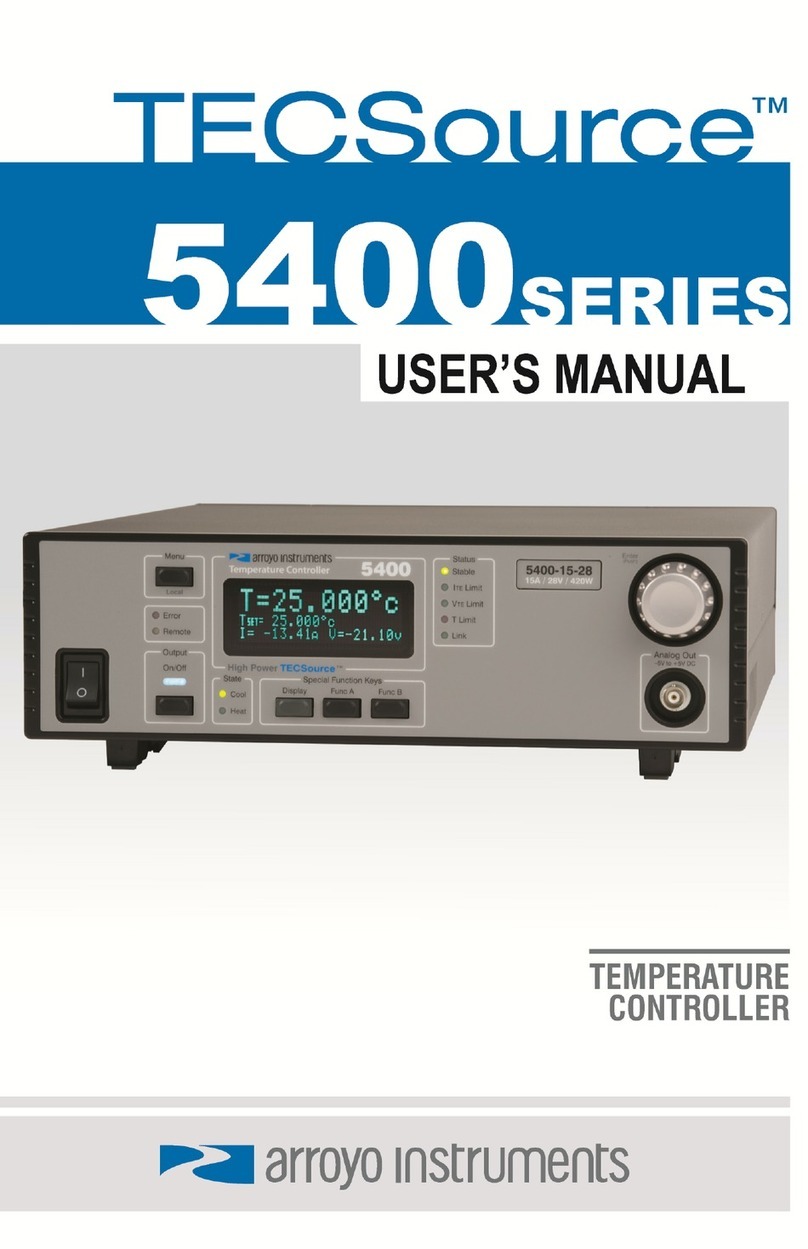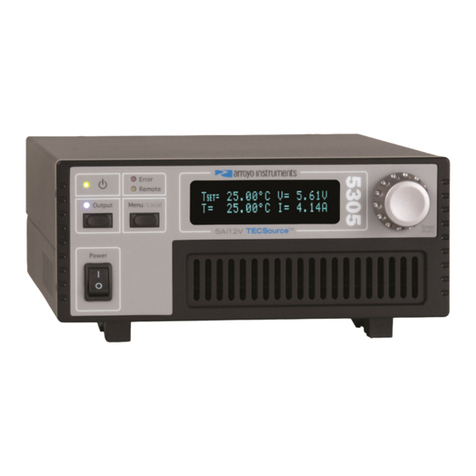
Page 6 · TECPak User’s Manual
Quick Start
The TECPak was designed with ease of use in mind, and you will likely have
little need for this manual for almost all of the features the unit offers. This
section will show how you can quickly get the unit up and running in almost no
time.
The TECPak has a universal input power supply, accepting 90 to 240 VAC, and
50 or 60 Hz. This covers all conventional power worldwide, but ensure your AC
power meets these requirements.
Plug the AC cord into the unit and into the wall outlet. Turn on the power switch
located on the IPC, and the unit will power up. The AC Power LED should light,
and the On / Error LED should remain dark.
Control of the TECPak can be done two ways: use the RS232 or USB computer
interfaces and control the instrument from the PC, or use the analog interface.
This quick start guide uses the computer interface. More information on the
analog interface can be found later in the manual.
Install the Arroyo Control software located on the CD that came with the
instrument (it can also be downloaded from our web site), located in the
Software folder on the CD. Once the software is installed, plug the instrument
into your RS-232 or USB interface. For USB users, the instrument may also ask
for drivers, which are also found on the CD.
Launch Arroyo Control, and in the TECSource panel (if one is not visible, click
Add Panel in the lower right of the window, and click Add a TEC Panel), select
the communications port to which your TECPak is connected. For USB users,
this will usually be the highest numbered port in the list. Click Connect, and
Arroyo Control will begin controlling the TECPak. Once connected, you will be
able to adjust settings, limits, and turn the output on or off.
Next, connect the cable between your LaserMount or other fixture and the
Output connector of the TECPak. We recommend using our cables as they
have been designed to work well with the TECPak. If using your own cables,
ensure they have been properly wired according to the pin-out of the TECPak
and your fixture.
Finally, set the set point to an appropriate temperature and turn the output on.
You will see the voltage and current begin driving the fixture to the set point you
have chosen. Depending on the thermal size of your fixture, it may take seconds
or several minutes to reach the set point.
If you notice the temperature is oscillating around the set point and not
stabilizing, you may need to adjust the Gain setting in the Settings… dialog.






























